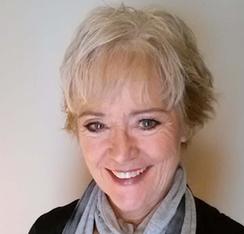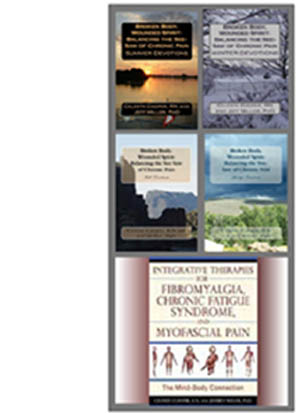I cannot think of a better way to wind down “September
Awareness of Chronic Pain” than by sharing with an interview I did with Orvie Prewitt
on the Stanford Chronic Disease Self-Management Program.
 |
| http://patienteducation.stanford.edu/materials/#books |
Setting goals when living with chronic pain can be difficult
and rewarding. Orvie Prewitt knows this first hand, and she knows what a good self-management
program can do to help us move forward in our lives.
Orvie is the “Program Coordinator” for the Kansas City
Regional Arthritis Center (KC-RAC). The KC-RAC is one of Missouri’s seven
Regional Arthritis Centers, which allows the State of Missouri to provide programs
and services through the National Council on Aging. No other state utilizes RACs to provide programs/services
through funding from Prevention as well as the National Council on Aging and the Centers for Disease Control. It would be wonderful if the CDC will also support the Stanford Chronic Disease Self-Management Program because it would be a great fit for their arthritis program funding. Pain is at the top of the list of symptoms for arthritis.
An Introduction to
the Stanford Program
“I believe the
Stanford Chronic Disease Self-Management Program (CPSMP) is exceptional because
it has something for everyone. Tips, tools, techniques, and more are presented,
and everything can be modified to each participant’s tolerance level. I know
chronic pain can be overwhelming, sometimes to the point of paralyzing how we cope
day-to-day, hour-to-hour, or even minute to minute. But we have choices, even
on those days when we convince ourselves we have none. We are presented with
basic choices every day, but we don’t give them due credit. One of those
choices is whether or not we will get out of bed.”
~Orvie Prewitt
About Orvie’s Connection
with the Program
Orvie is a Trainer/Leader for both the Stanford ChronicDisease Self-Management Program and the Diabetes Self-Management Program. She originally took the Chronic Disease Self-Management Program herself, so she
knows of what she speaks from a unique perspective. Her personal goal as a
“peer leader” is to help us understand we can achieve a better quality of life
despite living with chronic pain.
Orvie Tells Us about
the Program
I asked Orvie for some specific information regarding the
program, such as how it was developed and how it is evaluated.
From here on, we will refer to the Stanford Chronic Pain Self-Management Program as CPSMP.
The CPSMP was developed by
Sandra LeFort, PhD, MN, RN in 1996 at McGill University in Montreal and that it
was later updated at Memorial University, St. John's, Newfoundland, Canada,
with Lisa Cardas, RN of Toronto. The CPSMP was developed in conjunction with
Dr. Kate Lorig and the staff of the Stanford Patient Education Research Center.
In 2015, the
program was revised for a second time and a new book, Living a Healthy Life with Chronic Pain, was written to accompany
the program.
Stanford says a program must have evidence-based research
showing it is effective before releasing it for organizations to use. In two
randomized clinical trials funded by Health Canada and the Canadian Institutes
of Health Research (CIHR) they found:
- Participants had more vitality or energy, less pain, less dependence on others, improved mental health, and they are more involved in everyday activities.
- They are more satisfied with their lives compared to those who have not taken the program.
- Evaluation of the program across 10 pain clinics in Ontario, Canada found it to be beneficial for participants in terms of coping skills, education, and overall quality of life.
To date, the program has been delivered to hundreds of
individuals with chronic pain.
Why the Program Works
Like other Stanford self-management programs, the CPSMP is
led by a pair of peer leaders who understand because they too live health
problems. Orvie says she learns something new every time she co-leads a CPSMP,
because the program is very interactive and allows everyone to share with, and
learn from, others.
She says there are seven topics for effective
self-management of chronic pain, which must be strictly adhered to in the CPSMP.
- Techniques to deal with problems such as frustration, fatigue, isolation, and poor sleep
- Appropriate exercise for maintaining and improving strength, flexibility, and endurance
- Appropriate use of medications
- Effective communication with family, friends, and health professionals
- Nutrition
- Pacing activity and rest
- How to evaluate new treatments
“Self-management is a key component that
enhances the medical care we receive.”
~Orvie
A buddy system is started the 2nd session of the
CPSMP. Orvie says she and her co-peer leader encourage participants to continue
to communicate after the CPSMP. However, since it is a self-management program,
Stanford will not allow Leaders to collect contact information to share. Someone
in the group coordinates this, if desired. And, Orvie says the KC-RAC has found
participants are staying in touch.
Workshop/Program
Details
Like all the Stanford Self-Management Programs, Orvie says the
CPSMP insures privacy according to HIPPA guidelines.
Meetings:
- Are preset by the Stanford program
- Approximately two hours sessions
- Once a week for six weeks
Materials:
- Living a Healthy Life with Chronic Conditions (book)
- Moving Easy (CD)
- Participants can keep materials for their home use
There is suggested reading between meetings, but it is not
mandatory since this is a self-management class.
Cost:
The cost to attend as a participant is dependent on the
organization offering the program.
Conclusion
If you are interested in attending, becoming a peer leader,
or facilitating a Stanford Chronic Pain Self-Management Program through an organization
in your area, here is what you can do.
- For Missouri, visit www.moarthritis.org
- Outside of Missouri, visit http://patienteducation.stanford.edu/programs/cpsmp.html.
“ I am
constantly reminded I have a responsibility to be an active self-manager if I
want to have the best quality of life possible. I find strength from others and
it feels really good to see a participant have that “aha” moment when they
realize there is something they can do, be it ever so small, to help
themselves.”
Three words Orvie
would use to describe her experience:
“Informative —
Thorough — Stimulating”
- Stanford Small Group Self-Management Programs
- Contact information regarding Stanford’s Self-Management Programs
- How a facility near you can be trained to offer you this program
~ •
~ • ~ • ~ • ~ • ~
"Adversity is only an obstacle if we fail to see
opportunity."
Celeste Cooper, RN
Learn more about what you can do to help your body function to its
potential in the books you can find here on Celeste's blog.
All answers and blogs are based on the author's opinions and
writing and are not meant to replace medical advice.












No comments:
Post a Comment